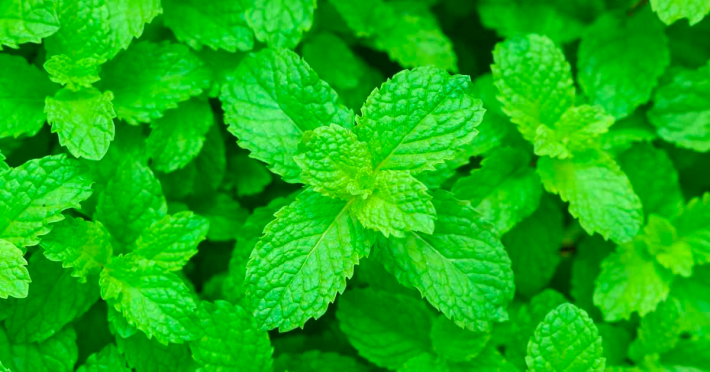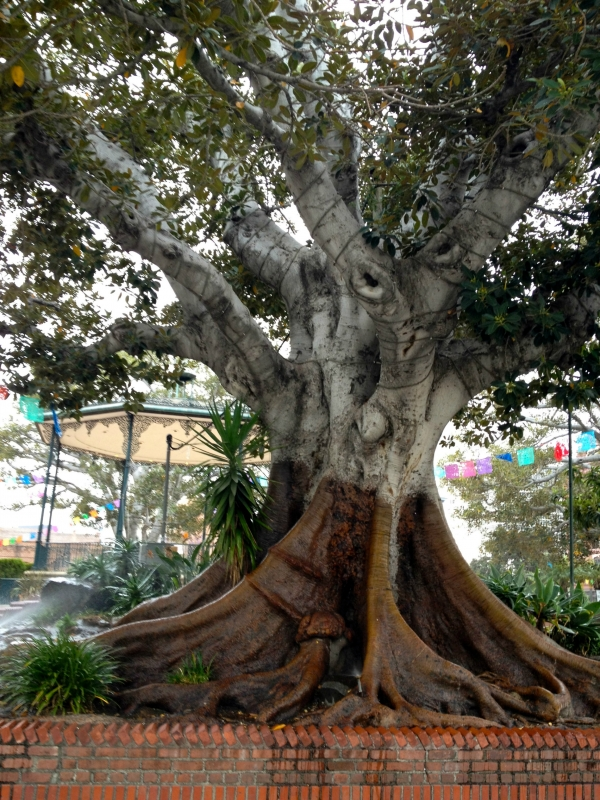Welcome to L.A. TACO’s plant and gardening column: Yerbalife. I’ll be your host, Memo Torres, a third-generation landscaper. Finding the best tacos is what I do for lunch, landscaping is what I do in life. Have a plant-related question? Email me at memo@lataco.com.
You need to understand that plants are just like animals; some have been domesticated, while others refuse to be tamed.
Horticulturalists and large propagators compete yearly to see who can find, create, and introduce the next big hit in the landscaping world. And while most take responsible measures to study their new plants before releasing them to our local garden centers, now and then, a few Joe Exotic-and-Carol Baskin-type horticulturalists will recklessly introduce everybody to an untameable botanical tiger.
One of the most common mistakes people make when purchasing plants is to treat them like decorations. They walk into a garden center, see something visually appealing, and think, "This will look great at home."
Almost every time I visit a property with landscaping issues, the problem starts with a bad design: the wrong plants in the wrong place.
Before you purchase your plants, you should ask yourself these five basic questions:
- Is this an indoor plant or an outdoor one?
- Will this work in shade, part shade, or full sun?
- What are its watering requirements?
- How big will it grow?
- Is it invasive?
There are also micro-climates all over Los Angeles County to consider. Plants that may work well in Santa Monica's full sun could bake in the valley. Plants that can handle the cooler weather of West Hollywood might not do as well in the face of the salty mist lingering by the ocean. My best recommendation is to drive around your neighborhood and see what plants are working and which are not.
There is a lot to consider when purchasing plants for your garden. But for now, here are five commonly used plants you should avoid.

Stipa: aka Pony Tail / Mexican Feather Grass
This feathery grass will tempt you with its breezy dance, its headdress swaying with the wind. Its bristle tips fade from green to yellow, and look like they were cut from a pony's tail, hence, their common name. But in reality, they're better described as troll hair because that's what this plant does: it trolls the surrounding gardens.
Hiding in its golden tips are seeds waiting to propagate all they touch. Unless you want to turn your yard into a prairie or see grass growing in every crack, choose a different grass or plant altogether. But if you do find yourself with these grasses, trim them down from a few inches to a foot above the ground each year, especially when they have flowered. It'll minimize the seeds spreading and eliminates the old growth, encouraging a fresh new growth of green grass for the next cycle.

Peppermint
This one is for all of you trying to start fruit and vegetable gardens. Peppermint is excellent for mojitos but is stubbornly invasive if left to its devices. You might be tempted to use it like a cover crop and plant it between your other veggies, but just like the golden bamboo, it will crawl along and sprout new shoots from the roots. It's best to use a container for these.

Pampas[s] Grass
It surprises me how willingly people accept the looming fate of their decisions for something they know they can only enjoy for a fleeting moment. They don't care that the cute little one-gallon plant they want to put next to a pool will grow six feet wide and thirteen feet tall. That is, they only care once it's too late.
People who buy pampas grass because their little flowering pompadours are so fluffy and cute are like those who buy mastiff puppies for the same reason. They give it a home, look at it, and feel nice and fuzzy inside. But then a year goes by, and now it's grown into a monster taking up space, making a mess, and messing up your home. Unlike the cute dog, with whom you will build a lasting bond of love that will make you miss those 1-gallon-sized first days, the Pampas grass will have you regretting you ever took it in.
Don't just make this mistake with Pampas Grass, keep it in mind with all plants you purchase in small containers.

Golden Bamboo
So you want a hedge you don't have to trim, providing a natural, free-flowing atmosphere that contrasts the flat top hairstyled hedge indicative of city living. You're considering the bushy, coarse, golden shoots of Golden Bamboo. It has some rather annoying problems, like a steady rain of leaves you will never finish cleaning up. And secondly, every piece of literature about Golden Bamboo claims it needs minimal water. They're wrong. In my experience, these plants will grow to demand tons of water.
But its worst quality is its buried one: the roots.
Plant bamboo in your front lawn, and you'll be mowing bamboo shoots that will thicken to the point of ruining your lawnmower blades. As the roots travel, they'll launch new shoots up and new roots down along the way. And if you try cutting or pulling the shoots to kill them, congratulations, you just went from a few bamboos to hundreds.
Good luck getting rid of it. If you're going to use it, put it in pots or containers where its roots won't reach Mother Earth. If you must do bamboo, I recommend black bamboo instead. Its growth system is more of a clumper rather than a crawler; the major visible difference is that it has black instead of golden-colored stems.

Ficus Trees
L.A.'s early urban forestry thought these majestic trees would be great for our streets. They are self-sufficient and resistant to almost all pests and diseases, and no matter how much you cut them back, they always bounce back bigger and better. It's why they once outnumbered palms along our city streets and sidewalks at some point.
But left unattended, they are stupendous. Ficuses are the hulks of trees. They are sewer line saboteurs and destroyers of foundations. They crumble concrete and move the earth itself with their relentless roots. But if you groom one, tend to it, and stay on top of it, they are the most loyal plants you can own in your garden.

The three most common Ficus tree varieties you'll see in Los Angeles are Nitida, Benjamina, and Macrophylla. Macrophylla has larger, darker green leaves, sometimes with roots growing down from its nodes (the joints of limbs), and an Amazonian-like root structure that protrudes monumentally out of the ground. Some of Los Angeles's oldest and first planted trees were the Macrophylla, more commonly known as "Moreton Bay Figs." We recently lost one of the first, planted in the year 1875 at Placita Olvera.


Benjamina, also known as 'Weeping Fig' can grow as large as her brothers, but she has daintier leaves and is more suitable than the others to being a potted house plant. But still, when she's planted outside and left unattended, she can impose her will on her surroundings, too.

The Ficus Nitida variety, known as the Indian Laurel Fig, is the most commonly seen around L.A., usually destroying our sidewalks. Fort Knox wouldn't stand a chance if these trees' roots knew greed. I recommend you avoid planting it and letting it go unchecked as a tree. But if you do, keep it away from walkways, foundations, sewers, and pools.
Nevertheless, the Ficus Nititda is still unrivaled as a tall privacy hedge, especially if you need something to grow over six or eight feet tall.
But keep it trimmed! If you keep the ficus tree trimmed to size and stay on it, you will prolong the life of the structures surrounding them.
The general rule of thumb with any tree is that, roots will grow to just outside a tree's canopy to reach rainwater. So keep your ficuses trimmed. Every time you let the tree grow out, so will its roots.







